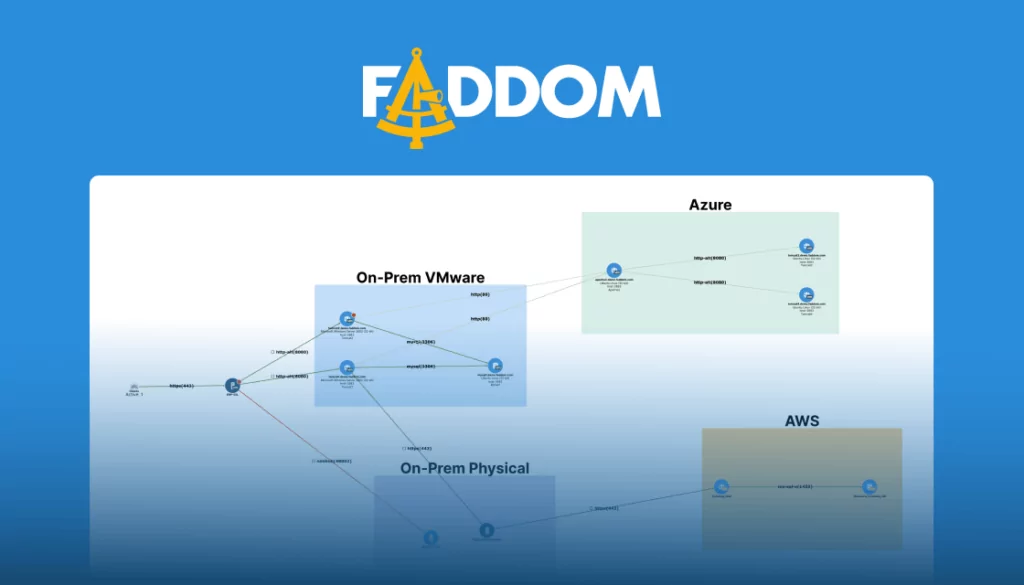What Are Application Portfolio Management Metrics?
Application Portfolio Management (APM) metrics are used to quantify the performance and value of an organization’s software applications. These metrics provide a concrete way to measure the technical performance, business alignment, and cost-effectiveness of the applications within an organization’s portfolio.
IT managers use these metrics to determine which applications are performing optimally, which need improvements, and which should be retired. They offer a clear view of the software environment, enabling informed decisions about application investments and deployments.
Getting the most out of APM metrics requires a deep understanding of the organization’s business objectives and the role of each application in achieving these objectives. It also necessitates a systematic approach to data collection, analysis, and interpretation, ensuring that the insights gained are accurate, relevant, and actionable.
Table of Contents
Toggle- What Are Application Portfolio Management Metrics?
- Why Are Portfolio Management Metrics Important?
- Top 4 Metrics of Application Portfolio Management
- Tips from the Expert
- How to Set Up Your Portfolio for Performance Measurement
- Faddom: Effective Dependency Mapping to Support Your Application Portfolio Management Efforts
Why Are Portfolio Management Metrics Important?
There are a few reasons APM metrics can provide significant value to organizations:
- Visibility: APM metrics provide a clear picture of the current state of your application portfolio. This is particularly important in large organizations that manage hundreds or even thousands of applications.
- Improving performance: These metrics help identify underperforming applications, providing an opportunity to improve their performance or replace them with more efficient alternatives.
- Reducing costs: By identifying redundant or underperforming applications, and consolidating, removing or replacing them, organizations can avoid unnecessary costs.
- Aligning with business objectives: By identifying which applications contribute most to achieving business objectives, you can prioritize our resources and efforts more effectively, ensuring a high return on investment.
Related content: Read our guide to application rationalization
Top 4 Metrics of Application Portfolio Management
Here are some of the most important metrics used for managing an application portfolio.
Application Technical Performance
This metric measures how well an application performs in terms of speed, reliability, and resource usage.
Performance issues can significantly impact the user experience and, consequently, the productivity of employees who rely on the application for their day-to-day tasks. By tracking technical performance, you can identify performance bottlenecks and take steps to address them.
In addition, tracking application technical performance helps you identify applications that are not optimized for current technology standards. These applications can be a drain on your resources and may pose security risks. By identifying and replacing these applications, you can improve the overall performance of our portfolio and reduce our exposure to security threats.
Related content: Read our guide to application portfolio management tools
Application-Business Alignment
This metric measures the degree to which an application aligns with your business objectives. An application that does not contribute to these objectives is a waste of resources.
Tracking application-business accord helps ensure that all your applications are aligned with your business objectives. This allows you to prioritize resources and efforts on applications that contribute most to achieving these objectives, improving the overall efficiency and effectiveness of our operations.
This metric also helps identify applications that have become obsolete or irrelevant. These applications consume resources and cause confusion and inefficiencies in your operations. By identifying and retiring these applications, you can streamline your portfolio and improve the productivity of employees.
Application Cost vs. Business Value
This metric measures the cost of maintaining an application against the value it provides to the business. Understanding cost-business value is crucial in managing the financial aspects of our application portfolio. It helps identify applications that are too costly to maintain relative to the value they provide.
Applications with a poor cost-business value can be a drain on your resources, particularly in times of budget constraints. By identifying and replacing these applications, you can optimize your portfolio and ensure that your resources are spent on applications that provide the greatest value to your business.
Application Risk
This metric evaluates the potential risks associated with an application, including security vulnerabilities, compliance issues, and operational risks. Risk assessment is crucial for maintaining the integrity, security, and reliability of your application portfolio. High-risk applications can expose your organization to data breaches, legal penalties, and operational disruptions. By identifying and mitigating these risks, you can protect your organization and ensure the smooth operation of your business.
The process of assessing application risk involves identifying potential security vulnerabilities, evaluating compliance with relevant regulations, and assessing the potential for operational disruptions. This metric helps prioritize risk mitigation efforts, focusing on applications that pose the highest risk to the organization. By systematically addressing these risks, you can improve the resilience of your application portfolio and reduce the potential for adverse impacts on your business operations.

Lanir specializes in founding new tech companies for Enterprise Software: Assemble and nurture a great team, Early stage funding to growth late stage, One design partner to hundreds of enterprise customers, MVP to Enterprise grade product, Low level kernel engineering to AI/ML and BigData, One advisory board to a long list of shareholders and board members of the worlds largest VCs
Tips from the Expert
In my experience, here are tips that can help you better leverage Application Portfolio Management (APM) metrics:
-
Include stakeholder feedback
Collect input from business users to uncover usability issues or misalignments not evident in technical data.
-
Leverage predictive analytics
Use historical data to forecast performance, costs, or alignment issues, enabling proactive decisions.
-
Segment applications by importance
Apply tailored metrics to critical, support, and redundant applications for focused analysis.
-
Align risk metrics with response plans
Map risk insights to incident response strategies to boost operational resilience.
-
Benchmark against industry standards
Compare your metrics with competitors or benchmarks to identify improvement opportunities.
How to Set Up Your Portfolio for Performance Measurement
Here are the key steps involved in establishing an application portfolio to measure performance.
Define Measurement Objectives
Clearly define your measurement objectives, making sure they align with your overall business strategy and goals. For instance, if you’re looking to reduce IT costs, your measurement objective could be to identify underutilized applications that can be retired or consolidated.
As your business goals evolve, your measurement objectives should also be updated. Regular reviews can help ensure that the objectives stay relevant and drive meaningful improvements.
When defining measurement objectives, it’s important to be realistic and specific. Instead of setting a broad objective like ‘improve application performance’, aim for something more specific like ‘reduce application downtime by 10%’. This will give you a clear target to aim for and make it easier to measure your progress.
Select KPIs
Key Performance Indicators (KPIs) are the metrics that will help you track progress towards your objectives. The selection of KPIs will depend on your unique business context and the nature of your applications. Keep in mind that each of the APM metrics we reviewed above are actually a family of metrics, and you’ll need to select the specific metrics that fit your needs.
For example, if your objective is to reduce IT costs, you would select KPIs from the “application cost vs. business value” family. These could include the total cost of ownership (TCO) of each application, the percentage of IT budget spent on maintenance vs. new development, or the cost per user of each application.
Conversely, if your objective is to improve application performance, relevant KPIs from the “application technical performance” family could include application uptime, response time, or the number of performance-related incidents.
Discovering and Mapping Applications
The discovery and mapping phase involves creating a comprehensive inventory of all applications within the organization and understanding their interdependencies. This step is critical for effective portfolio management, as it provides a baseline for assessing application performance, alignment, cost, and risk. By mapping out the application landscape, IT managers can identify redundancies, uncover critical dependencies, and better understand how applications support business processes.
To effectively discover and map applications, organizations often use automated application dependency mapping tools that can scan their IT environments to identify applications and their components. This information is then used to create a visual map or diagram of the application landscape, highlighting how different applications are connected and how data flows between them. This comprehensive view aids in identifying opportunities for consolidation, optimization, and risk mitigation, setting the stage for informed decision-making and strategic planning.
Faddom can help you map your application portfolio in minutes. Learn more or get a free trial using the form to the right.
Collecting Data
Without accurate and timely data, your KPIs and measurement objectives are meaningless. Data collection can be automated using application portfolio management platforms. These tools can collect data from various sources, such as application logs, user feedback, and IT service management systems. The data can then be consolidated and analyzed to generate insights.
Communicate Results
Communicating the results of data collection and analysis is an often overlooked but crucial part of setting up your portfolio for performance measurement. The insights derived from your KPIs and measurement objectives need to be shared with the relevant stakeholders. This could include senior leadership, IT staff, business users, and external stakeholders like customers and partners.
Continuously Review and Improve
Maintaining your portfolio for performance measurement requires an ongoing process of continuous review and improvement. This involves regularly reviewing your measurement objectives, KPIs, and data collection process to ensure they are still relevant and effective.
Continuous improvement also involves acting on the insights derived from your KPIs. This could involve making changes to your applications, IT processes, or the overall business strategy.
Faddom: Effective Dependency Mapping to Support Your Application Portfolio Management Efforts
The right application dependency mapping (ADM) tool helps with application portfolio management by discovering all applications and their dependencies across a hybrid environment.
With Faddom, you can visualize your on-premises and cloud infrastructure in as little as one hour and immediately see all your servers (grouped by business application) and how they are dependent on each other.
See it in action! Start your free trial today by simply filling out the form in the sidebar!







